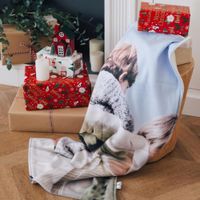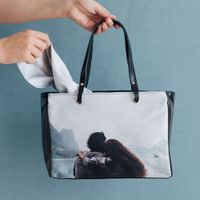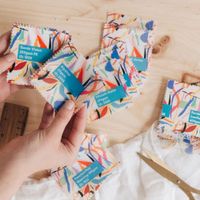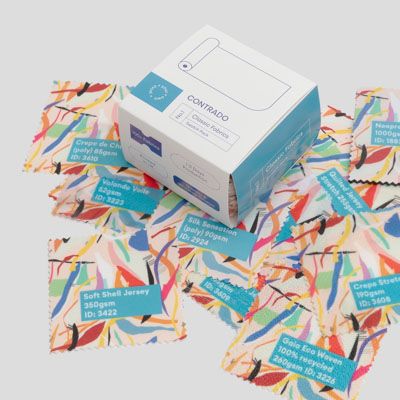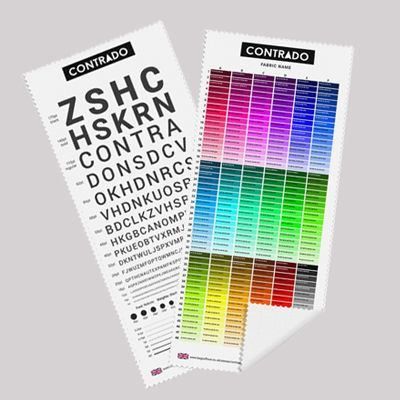Range of Mesh Fabrics
Choose from our range of different mesh fabrics
-
![Voille De Ville]()
Voille De Ville
-
Max Print:
1.49m
-
Weight:
120gsm
-
Roll Width:
1.51m
Medium weight, stiff and non-stretch, with a shiny finish.
Composition:100% polyester
-
![Florence Power Net]()
Florence Power Net
-
Max Print:
1.34m
-
Weight:
60gsm
-
Roll Width:
1.36m
Light, soft and stretchy with a matte finish.
Composition:90% polyester 10% elastane
-
![Mulmul Soft Muslin (poly)]()
Mulmul Soft Muslin (poly)
-
Max Print:
1.29m
-
Weight:
55gsm
-
Roll Width:
1.31m
Light, soft and non-stretch with a matte finish.
Composition:100% polyester
-
![Loose Knit Jersey]()
Loose Knit Jersey
-
Max Print:
1.44m
-
Weight:
185gsm
-
Roll Width:
1.46m
Medium weight, coarse and stretchy with a matte finish.
Composition:95% polyester 5% elastane
-
![Airflow Light]()
Airflow Light
-
Max Print:
1.45m
-
Weight:
145gsm
-
Roll Width:
1.47m
Soft and knitted. Eyelet knit gives honeycomb surface effect. Extremely breathable.
Composition:100% polyester
-
![Olympic Sports Jersey]()
Olympic Sports Jersey
-
Max Print:
1.43m
-
Weight:
180gsm
-
Roll Width:
1.45m
A sports jersey with a microdot construction, pinhole mesh sports material.
Composition:100% polyester
-
![Wool Silk Blend Plain Weave]()
Wool Silk Blend Plain Weave
-
Max Print:
1.4m
-
Weight:
113gsm
-
Roll Width:
1.42m
Light cream base color, open plain weave. Airy, light, flowing. Soft yet strong. Super bright colors & deep blacks using reactive printing.
Composition:70% wool 30% silk
Expected Shrinkage = Weft: 5% Warp: 3.5%
Care instructions
Wash at 30°C, low tumble dry heat, hang to dry, do not wring, low heat iron.
What is Mesh?
Mesh is a term that is given to a wide range of textiles which have an open - or "mesh"- structure. This means that they have spaces between the yarns that are used to make them (think of fishnet tights) which can be of any shape of size. Mesh fabrics can be lace, they could be woven or even knitted. Either natural or man made yarns can be used to make them. If knitted, they could be warp-knitted or weft knitted.
How Your Printable Mesh Fabric is Finished
There are multiple edging options that you can choose from when you design mesh fabric using our online tool. You can opt to have your printable mesh fabric sent to you "As is"; this means that we will send your fabric exactly as it comes from the digital printer. This will have a white unprinted border around the edge of your design, and means you can cut exactly how you want to once you receive your printed mesh fabric. If you don't want those edges, you can choose to have your fabric "Cut on The Line" and have one of our experts cut your printing on mesh fabric out, leaving no white edges. If you would prefer, you can have your custom mesh fabric printing hemmed. With a choice of an overlocked hem, which elegantly stitches completely over the edges of your netting fabric, or a baby hem. To create this hem on light weight fabrics or medium weight fabrics that fray, we will make a two fold hem and use a straight stitch. On heavy, stiff or no-fray fabrics, we will made a single fold hem and use a straight stitch. Please ensure that you take the hem into account when selecting your custom sizes.
- Light fabrics - hem will take up 6-8 mm, on each of the four sides
- Other fabrics - hem will take up 15-20 mm, on each of the four sides
